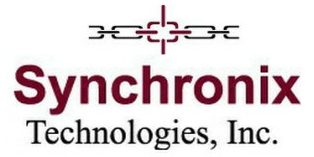Theory of Constraints offers New Angles on Supply Chain Management
Supply Chain Management is an interesting topic. It has of course emerged as a body of knowledge in its own right, with Professional Associations dedicated to the betterment of Professionals and the furtherance of the body of knowledge, and Certification for professionals who choose to take their expertise to new levels and gain formal recognition of that expertise. I have colleagues whose depth of understanding of Supply Chain issues places them in a rarefied zone.
At the same time a job advert for a “Supply Chain professional” can turn out to be for a Purchasing assistant.
There are a lot of different definitions. A quick look at Wikipedia (hardly the most authoritative source, but often interesting) provides a variety of different ways of saying the same thing.
Well … Theory of Constraints brings some entirely new and powerful angles to the conventional thinking.
First of all, the TOC applications have major implications for the inventory in a Supply Chain and the velocity of movement and the lead time through all the links in the chain.
This was always true, with the TOC’s application to Production and the application to Distribution, which includes a unique approach to Replenishment.
However, in recent years the development of Demand Driven MRP (DDMRP), and the bigger-picture expansion into Demand Driven Planning, Execution & Control systems has taken this to a whole new level. The Demand Driven Institute has driven this, and the software now managed by Demand Driven Technologies probably remains the most advanced of its kind in terms of compliance to the Demand Driven criteria.
TOC and DDMRP helps management do things that conventional Supply Chain Management cannot support; and the combination does a better job of many of the standard Supply Chain Management requirements than conventional Supply Chain Management tools do.
But beyond this, the TOC offers an entirely different way of viewing Supply Chains.
Throughput Accounting provides a basis for making a lot more profit from the same volume of sales. It highlights which products and product lines offer the largest opportunity for profit, and this can add a new dimension to the concept of Supply Chain thinking where a certain level of Supply Chain performance might open the doors to winning new (more profitable) business from existing customers, winning (more profitable) new business from new customers, and entering entirely new markets where the customers in those markets are better candidates for the types of products that generate the most profit for the company.
Throughput Accounting can also have a significant impact on a company’s Pricing strategy; and therefore be a contributing factor for re-thinking or at least re-assessing a company’s sales, marketing and manufacturing strategy.
The tie-in with Sales & Marketing is obvious, of course, but also far beyond the obvious: the TOC brings new tools (and thinking) to the table.
First, the TOC Solution for Sales offers an approach to selling value that helps close more sales. But there is also an application, Sales Process Engineering, which helps increase the lead-flow into a company and the close rate at the end of the sales process by an order of magnitude.
All of which is helpful when you think you know the product mix that generates the most profit; but becomes invaluable when you can “aim” the sales efforts at a more profitable product mix.
Then, the TOC’s Mafia Offer adds yet another dimension to this. The TOC Thinking Processes and TOC applications provide a platform for making an offer to a customer (or a segment of a market or en entire market) which is so outrageously good that the prospect cannot rationally refuse it. And simultaneously, it is shaped in such a way that no competitor can match the offer and deliver on their commitment; and ideally, it is also shaped in such a way that no competitor WANTS to match the offer because they perceive it to be insane.
Supply Chain performance can be the key to such an offer. Offering a prospect the potential to operate with a fraction of their current inventory –because of your internal and down-stream performance – can be a business-winner in the right circumstances (if sold correctly).
Offering a prospect a shorter lead time than competitors can match can, in the right circumstances, be a business-winner (if sold correctly).
“Simply” guaranteeing on-time delivery in an environment where competitors cannot provide good on-time performance can be the basis for winning business (if sold correctly).
Providing guarantees while offering delivery in 1/2 and even 1/4 standard lead times can be the basis for winning business AND boosting margins enormously.
But this is bigger than a Supply-Chain perspective of course; the key to making the offer may be in any of a variety of formats.
